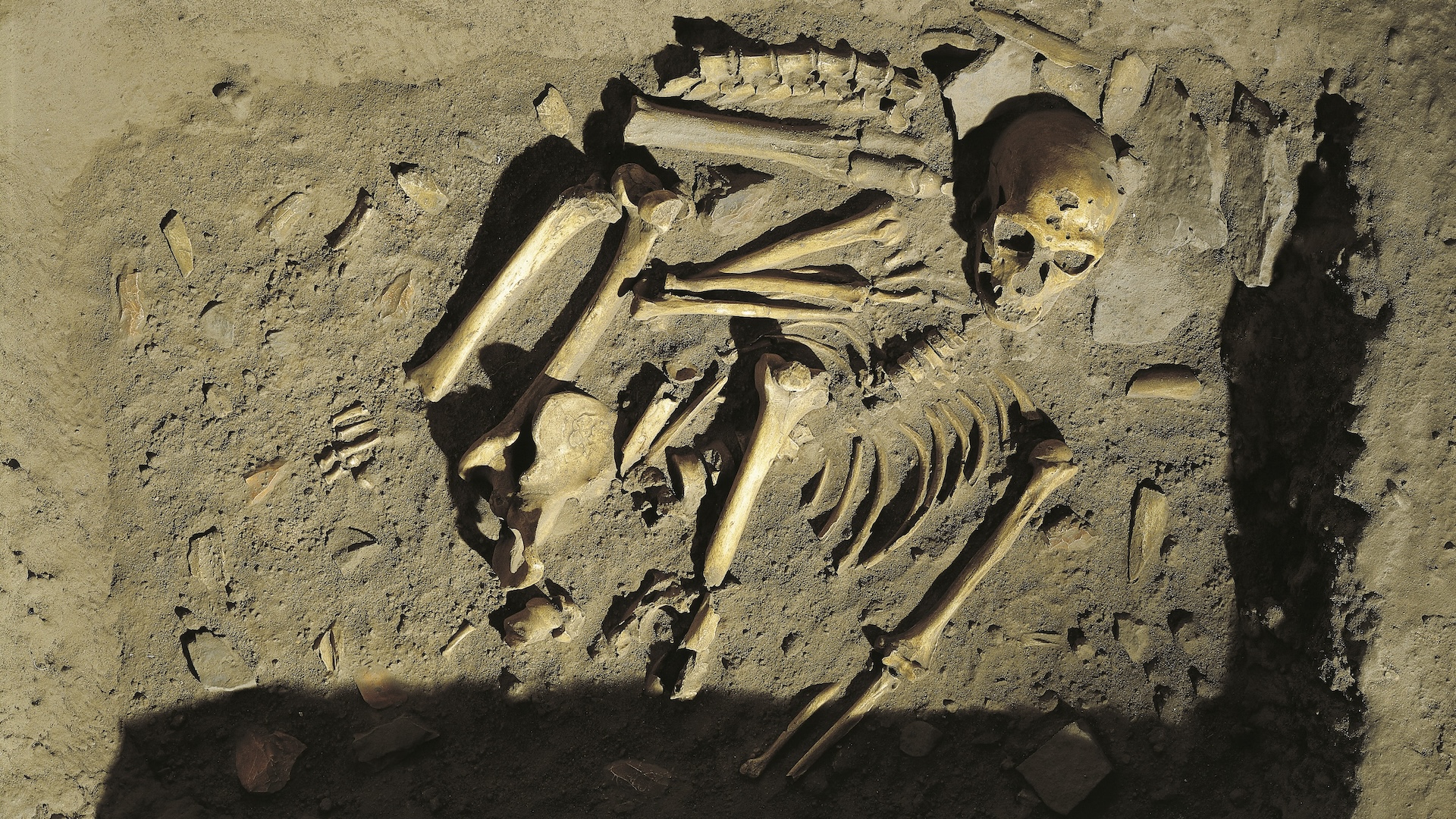
Neanderthals are among the closest extinct relatives of modern humans, but they buried their dead differently than early Homo sapiens did, new evidence suggests.
Among the hominins — the group that includes humans and the extinct species more closely related to humans than to any other animal — Neanderthals and H. sapiens are currently the only ones known to bury their dead.
"We know there are other hominins that had some mortuary practices, that did something with their dead, but no others put their dead in holes and covered them up like we do and the Neanderthals did," study lead author Ella Been, a paleoanthropologist at Tel Aviv University in Israel, told Live Science.
Related: Did we kill the Neanderthals? New research may finally answer an age-old question.
To learn more about the similarities and differences between the funerary practices of Neanderthal and H. sapiens, Been and Omry Barzilai, an archaeologist at the University of Haifa in Israel, analyzed 17 Neanderthal and 15 H. sapiens burials. The burials ranged from 35,000 to 120,000 years old and came from Western Asia, a region that Neanderthals and H. sapiens occupied at the same time.
The researchers found numerous similarities between Neanderthal and H. sapiens burials. "They both buried males and females, and babies, children and older people," Been said. Both also buried items with people. For instance, previous digs found wild goat horns, red deer jaws, tortoiseshells and stone artifacts in Neanderthal burials, and deer antlers, boar jaws, seashells and the red mineral ochre with H. sapiens burials.
However, "there are also some big differences," Been said. First, "Neanderthals buried their dead inside caves. Early H. sapiens either buried their dead outside of caves, or under the cave entrances, not under the roofs of caves."
Second, "early H. sapiens almost always buried their dead in the fetal position, with their heads flexed down toward their chests," Been said. "Neanderthals buried their dead in a variety of positions."
"The data are limited, but this is an impressive survey," John Hawks, a paleoanthropologist at the University of Wisconsin–Madison who did not take part in this research, told Live Science. Notably, he said there appear to have been consistent burial practices that distinguished Neanderthal and early H. sapiens burials. This is surprising because all of these small, scattered populations wouldn't be expected to share cultural practices over long stretches of space and time.
The new study also suggests that Neanderthals and early H. sapiens might have started to bury their dead at about the same time, about 90,000 to 120,000 years ago, and in the same geographical area, the Levant — the eastern Mediterranean region that today includes Israel, the Palestinian territories, Jordan, Lebanon and Syria. Scientists have long thought the Levant was a key gateway for hominins migrating out of Africa.
"This was our most surprising find to me," Been said. "Only after we finished comparing their habits surrounding the burial of their dead did we find that all other burial sites of theirs, in Africa and in Europe, came after the Levant."
Previous work suggested that Neanderthals and early H. sapiens exchanged knowledge in the Levant, Been said. If you were to look at sites where they coexisted in time in the Levant — from about 250,000 to 50,000 years ago — and had only artifacts and no bones, "you wouldn't know if they were Neanderthal or early H. sapiens," she said.
However, in addition to whatever exchanges of knowledge occurred between Neanderthals and early H. sapiens in the Levant, the researchers suggested both human lineages may have buried their dead for another reason.
"We know when there are a lot of groups living in the same territory, and there is resulting pressure over, say, resources, they start using burials to mark their connection to specific caves," Been said.
However, Hawks thinks the number of sites examined in the new study is too small to support a single origin for human burial practices in the Levant, with dispersal around the world from there.
"The question is whether there is transmission of ideas or concepts from one single source, and the data really are not good enough to demonstrate that flow of information," Hawks said.
Been agreed that the number of burials was small. "We should do more excavations," she noted. "Maybe in three years, or 30, or 300, we'll find more burials, and the implications will change."
The scientists detailed their findings earlier this year in the journal L'Anthropologie.







